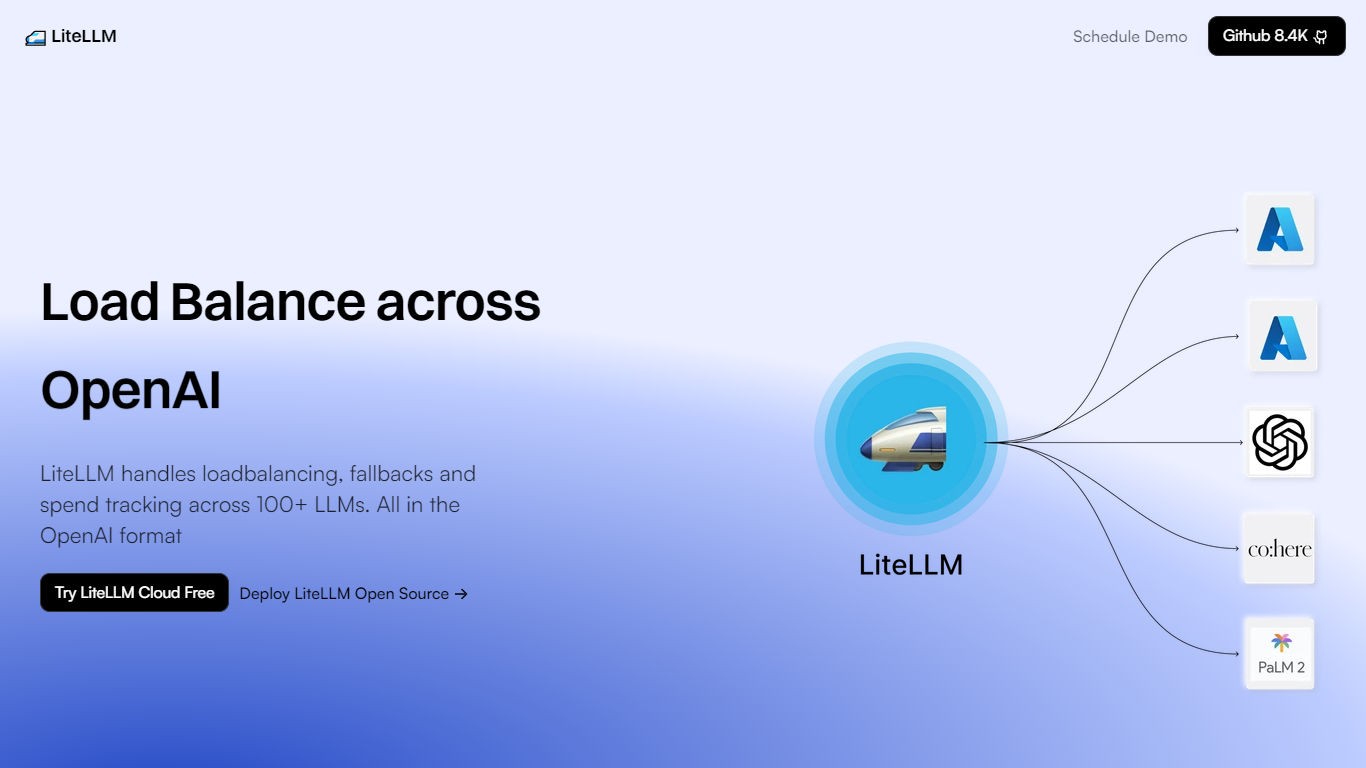LiteLLM vs GPT-4
In the contest of LiteLLM vs GPT-4, which AI Large Language Model (LLM) tool is the champion? We evaluate pricing, alternatives, upvotes, features, reviews, and more.
If you had to choose between LiteLLM and GPT-4, which one would you go for?
When we examine LiteLLM and GPT-4, both of which are AI-enabled large language model (llm) tools, what unique characteristics do we discover? GPT-4 is the clear winner in terms of upvotes. GPT-4 has 9 upvotes, and LiteLLM has 6 upvotes.
Don't agree with the result? Cast your vote and be a part of the decision-making process!
LiteLLM

What is LiteLLM?
LiteLLM is an innovative platform that specializes in managing large language models (LLMs) effectively for businesses and developers. It streamlines the complex tasks associated with these models by offering load balancing, fallback solutions, and expenditure tracking across more than 100 different LLMs while maintaining the standard OpenAI format compatibility.
This makes integrating and operating multiple LLMs more efficient, reliable, and cost-effective, as it provides features such as adding models, balancing the load between different compute resources, creating keys for access control, and tracking spend to manage budgets better. With LiteLLM, clients have the option of trying their cloud service for free or deploying their open-source solution.
The platform is backed by a robust community, evident from its GitHub repository that has garnered 8.4k stars, over 40,000 Docker pulls, and over 20 million requests served with a 99% uptime. Assistance from over 150 contributors ensures that LiteLLM continues to evolve and meet the demands of users across various sectors looking to leverage the power of LLMs.
GPT-4

What is GPT-4?
GPT-4 is the latest milestone in OpenAI’s effort in scaling up deep learning.
GPT-4 is a large multimodal model (accepting image and text inputs, emitting text outputs) that, while less capable than humans in many real-world scenarios, exhibits human-level performance on various professional and academic benchmarks. For example, it passes a simulated bar exam with a score around the top 10% of test takers; in contrast, GPT-3.5’s score was around the bottom 10%. We’ve spent 6 months iteratively aligning GPT-4 using lessons from our adversarial testing program as well as ChatGPT, resulting in our best-ever results (though far from perfect) on factuality, steerability, and refusing to go outside of guardrails.
GPT-4 is more creative and collaborative than ever before. It can generate, edit, and iterate with users on creative and technical writing tasks, such as composing songs, writing screenplays, or learning a user’s writing style.
LiteLLM Upvotes
GPT-4 Upvotes
LiteLLM Top Features
Load Balancing: Efficiently distributes LLM tasks across various platforms including Azure, Vertex AI, and Bedrock.
Fallback Solutions: Ensures continuity of service with fallback mechanisms.
Spend Tracking: Monitors and manages spending on LLM operations.
OpenAI Format Compatibility: Maintains standard OpenAI format for seamless integration.
Community Support: Backed by a strong community of over 150 contributors with resources and documentation.
GPT-4 Top Features
No top features listedLiteLLM Category
- Large Language Model (LLM)
GPT-4 Category
- Large Language Model (LLM)
LiteLLM Pricing Type
- Freemium
GPT-4 Pricing Type
- Freemium
